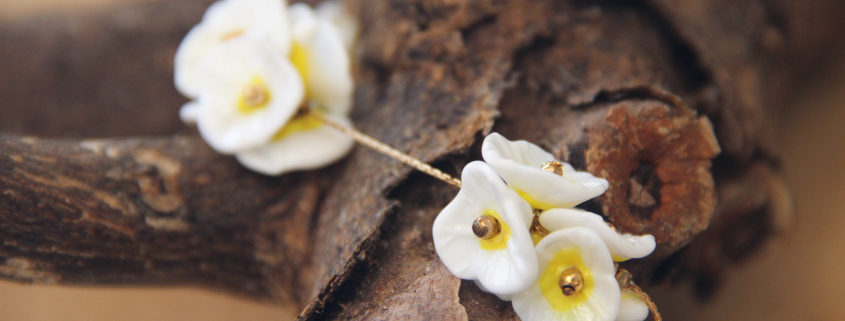The Art of Lampwork: A Journey into Glass Bead Making
Lampwork, a centuries-old glassworking technique, is a fascinating and intricate art form that involves creating glass beads and other small objects by melting glass with a torch or lamp. This method has captivated artisans and collectors alike, producing vibrant, detailed pieces that can be used in jewelry, decorative arts, and more. In this article, we will delve into the history of lampwork, the process involved in creating lampwork beads, the materials and tools required, and why this technique continues to enchant artists and enthusiasts around the world.
The History of Lampwork
The origins of lampwork can be traced back to ancient times, with early examples found in Roman, Egyptian, and Mesopotamian cultures. Initially, glass beads were made using simple flame-heating techniques. However, the method we recognize today as lampwork began to develop during the Renaissance in Venice, Italy, particularly on the island of Murano. Murano glassmakers refined the technique, using oil lamps and bellows to produce the necessary heat for melting glass, hence the term “lampwork.”
Over the centuries, lampworking spread throughout Europe and eventually to the rest of the world. Each region added its own unique styles and methods, contributing to the rich diversity of lampwork art seen today. Modern lampworking uses propane or natural gas torches, providing greater control and precision.
The Lampwork Process
Creating lampwork beads involves several steps, each requiring skill and patience. Here is a closer look at the process:
- Preparation: The artist begins by selecting glass rods, which come in various colors and types. They also prepare the mandrels, thin metal rods coated with a release agent to prevent the molten glass from sticking permanently.
- Heating the Glass: Using a torch, the artist heats the end of a glass rod until it becomes molten. The flame’s temperature and the artist’s control over the heat are crucial to achieving the desired consistency.
- Forming the Bead: Once the glass is molten, the artist winds it around the mandrel, rotating it to form a bead. This process requires steady hands and precise movements to ensure an even shape. The glass must be kept at a consistent temperature to avoid cracking or bubbling.
- Adding Details: While the glass is still hot, the artist can add intricate details by layering different colors of glass, using tools to manipulate the shape, or applying decorative elements such as dots, stripes, and swirls. This step showcases the artist’s creativity and technical skill.
- Annealing: After the bead is formed and decorated, it must be annealed to relieve internal stresses. The bead is placed in a kiln and gradually cooled to ensure durability and prevent cracking. The annealing process can take several hours, depending on the size and complexity of the bead.
- Finishing: Once annealed, the bead is removed from the mandrel and cleaned. The release agent is washed off, and the bead may be polished to enhance its shine.
Materials and Tools for Lampwork
To create lampwork beads, an artist needs specific materials and tools. Here is a list of the essentials:
- Glass Rods: These are the primary material, available in various colors and compositions, such as soft glass (soda-lime) and hard glass (borosilicate).
- Torch: A propane or natural gas torch provides the high temperatures needed to melt the glass.
- Mandrels: These thin metal rods are coated with a release agent and used to form the beads.
- Kiln: A kiln is essential for annealing the beads, ensuring they cool slowly and evenly to prevent stress fractures.
- Tools: Various tools such as tweezers, paddles, and graphite rods help shape and manipulate the glass.
- Protective Gear: Safety glasses with didymium lenses protect the eyes from the bright flame and harmful glare, while heat-resistant gloves and a well-ventilated workspace are also crucial.
Why Lampwork Continues to Enchant
Lampwork’s enduring appeal lies in its combination of artistic expression and technical precision. Here are a few reasons why this technique remains beloved:
- Creative Freedom: Lampwork allows artists to explore an infinite range of designs and colors, from simple, elegant beads to complex, multi-layered creations. The ability to experiment with different techniques and styles fosters endless creativity.
- Unique Pieces: Each lampwork bead is a unique piece of art, with no two beads being exactly alike. This individuality makes lampwork jewelry and decorative items highly sought after by collectors and admirers.
- Tactile Beauty: The smooth, glossy surface of lampwork beads is pleasing to the touch, adding a sensory dimension to their visual appeal. The interplay of light and color within the glass creates a mesmerizing effect.
- Historical Significance: The rich history of lampworking adds a sense of tradition and heritage to the craft. Contemporary lampworkers build on centuries of knowledge and innovation, creating pieces that connect the past with the present.
- Community and Education: The lampworking community is vibrant and supportive, with many opportunities for learning and sharing. Workshops, online tutorials, and craft fairs provide avenues for both novice and experienced artists to hone their skills and share their passion.


